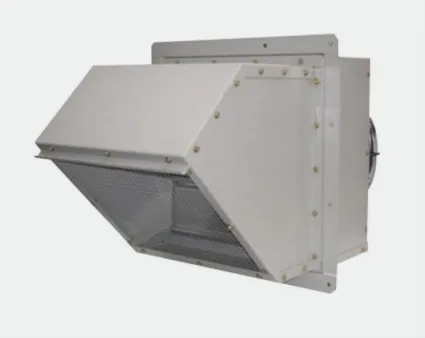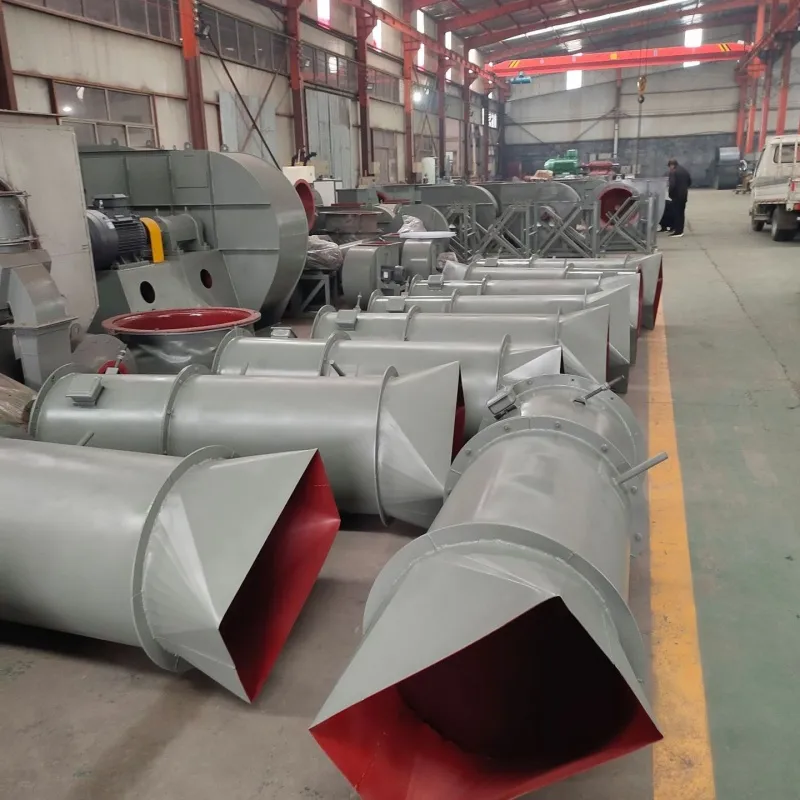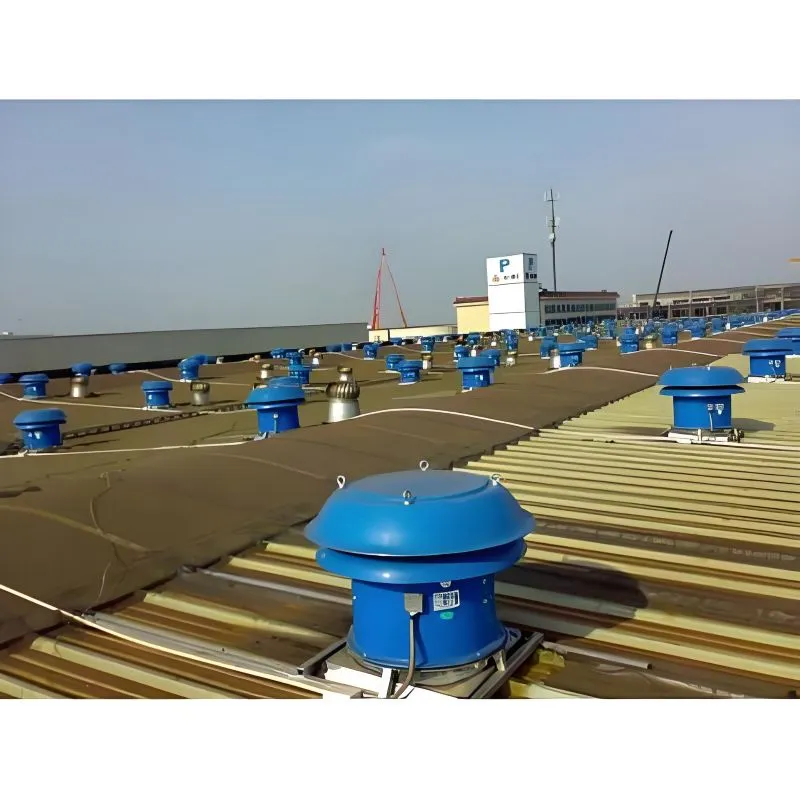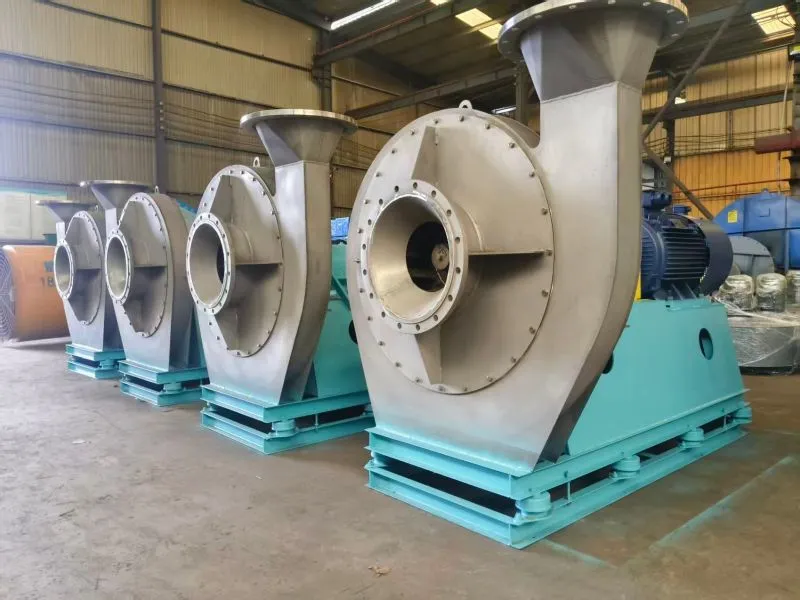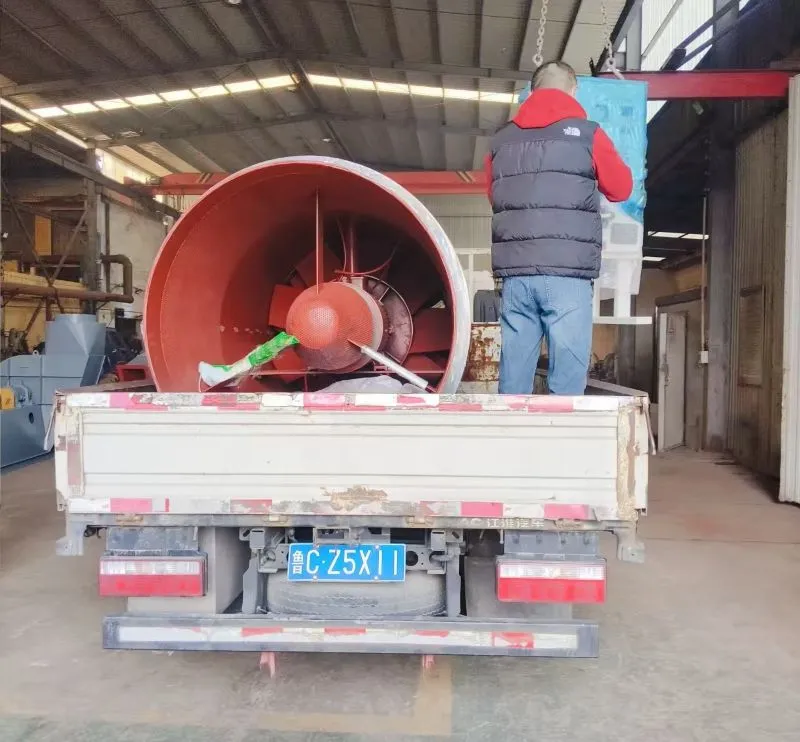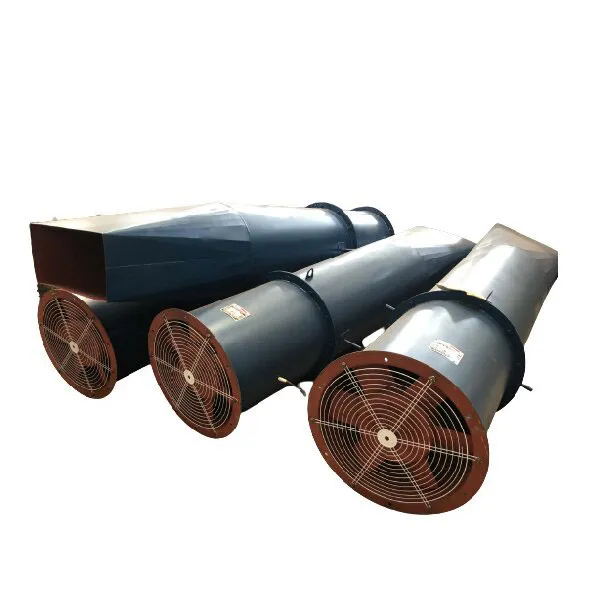د سینټرفیوګال بلورز نړۍ کې ، پوهیدل چې څه پرمختګ هڅوي کلیدي ده. ډیری وختونه له پامه غورځول شوي، دا ماشینونه د کان کیندنې څخه تر HVAC پورې په صنعتونو کې حیاتي دي. غلط فهم؟ دا بلورز د دوی په پراختیا کې جامد دي. بالکل برعکس. راځئ چې په دې ساحه کې دواړه څرګند او فرعي بدلونونو ته وده ورکړو.
موثریت او د انرژي سپما
یو څوک د سینټرفیوګل بلورز په اړه فکر کوي چې نسبتا مستقیم وي: ډیر ځواک، ډیر هوا جریان. مګر په واقعیت کې، عصري نوښتونه خورا په موثریت باندې تکیه کوي. د انرژي لګښتونو د زیاتوالي او د چاپیریال سختو مقرراتو سره، د بریښنا مصرف کمول یو لومړیتوب دی. زه یوه پروژه یادوم چیرې چې د بلیډ جیومیټري اصلاح کول د بریښنا کارول د درناوي وړ حاشیې سره کم کړي. دا یوازې تیوري نه وه - دا د ریښتینې نړۍ غوښتنلیک و.
ډیر ځله نه، د موثریت ښه والی د تکراري ازموینې له لارې ترلاسه کیږي. د کمپیوټري مایع متحرکاتو (CFD) سمولونه ذهن ته راځي؛ دوی د ډیری انجینرانو لپاره د لوبې بدلونکي دي. زما په یاد دي کله چې زیبو هونګچینګ فین شرکت ، لمیټډ په https://www.hongchengfan.com کې د ورته وسیلو ادغام پیل کړ. دا د بلورز رامینځته کولو کې یو مهم ټکی په نښه کړ چې نه یوازې ځواکمن وو بلکه په هوښیار ډول د انرژي محافظت لپاره ډیزاین شوي.
بله زاویه د متغیر فریکوینسي ډرایو (VFDs) مخ په زیاتیدونکي کارول دي. دا بلورز ته اجازه ورکوي چې خپل سرعت د سیسټم غوښتنې سره سم تنظیم کړي، د انرژۍ د نورو سپما لپاره فرصتونه وړاندې کوي. د VFDs ادغام له ننګونو پرته نه دی، مګر احتمالي ګټې په کافي اندازه مجبور دي چې ډیری شرکتونه د زده کړې وکر ته هڅوي.
مواد او پایښت
په صنعتي غوښتنلیکونو کې، سینټرفیوګال بلورز اکثرا د سخت چاپیریال سره مخ کیږي - کیمیاوي، رطوبت، خړوبونکي ذرات. د ډیر مقاومت لرونکي موادو په لور حرکت لکه سټینلیس سټیل او ځانګړي کوټینګونه د پام وړ دي. په زیبو هونګ چینګ فین شرکت ، لمیټډ کې د زنګ په وړاندې مقاومت لرونکي مینه والو پراختیا دا رجحان په ګوته کوي.
د مثال په توګه د کانونو صنعت ته پام وکړئ. د بلورز څخه تمه کیږي چې په دوامداره توګه په دوړو، د ځمکې لاندې ترتیباتو کې کار وکړي. د کلونو په اوږدو کې، ما لیدلي چې پرمختګونه یوازې د فولادو څخه پرمختللي الیاژونو ته لیږدول کیږي چې د فعالیت سره موافقت پرته اوږد عمر لوړوي. دا تکامل په شپه کې ندی شوی مګر د دوامداره ساحوي آزموینو او فیډبیک لوپونو له لارې.
دا په ځینو غوښتنلیکونو کې د سپک وزن کمپوزونو سره ورته کیسه ده. دا مواد نه یوازې د پایښت وړاندیز کوي بلکې د وزن د پام وړ کمښت وړاندیز کوي، کوم چې د ټرانسپورټ سناریو کې د اسانه نصب او انرژي موثریت لپاره ژباړي.
د سمارټ ټیکنالوژۍ ادغام
د سمارټ ټیکنالوژۍ جمله ممکن د ډیر کارونې احساس وکړي ، مګر د سینټرفیوګال بلورز په شرایطو کې ، د دې اغیزې له پامه غورځول کیدی نشي. د IoT وسیلې او سینسرونه د وړاندوینې ساتنې نوي دور پیل کوي. نور د ساتنې عکس العمل نه دی؛ پرځای یې، احتمالي ناکامۍ اټکل کیدی شي او کم شي.
دا وړاندوینه وړتیا د صنعتي عملیاتو لپاره انقلابي دی چې په دوامداره اپټایم تکیه کوي. ما د تاسیساتو شاهد یم چیرې چې یوازې د کمپن سینسرونو اضافه کول د ناکامۍ ترمینځ اوسط وخت د پام وړ وغزاوه. ولې؟ ځکه چې اختلالات مخکې له دې چې د جدي ماتیدو لامل شي کشف شوي.
د معلوماتو راټولول او د ریښتیني وخت څارنه د صنعت معیارونه کیږي. لکه څنګه چې د https://www.hongchengfan.com په څو مخونو کې ښودل شوي، دا ډول نوښتونه د عصري سیسټم تشخیص ملاحظه کوي، سوداګرۍ ته د ذهن آرامۍ او عملیاتي موثریت وړاندې کوي لکه مخکې هیڅکله نه.
اصلاح او انعطاف پذیري
دا شاید د پیرودونکي لخوا پرمخ وړل شوي نوښت رجحان وي. زما په تجربه کې، هیڅ دوه غوښتنلیکونه یو شان ندي، او پیرودونکي د بلور حلونو ارزښت ورکوي چې د دوی ځانګړي مشخصاتو سره سمون لري. زیبو هونګچینګ فین شرکت، لمیټډ د ترتیبونو یو اغیزمن لړۍ وړاندې کوي — له 50 څخه ډیر لړۍ او له 600 څخه ډیر ماډلونه. دا نوعه د بازار د سنتریت په اړه لږ او د مناسبو اړتیاوو په نښه کولو په اړه ډیر څه دي.
دودیز کول د فزیکي اړخ څخه بهر ځي. دا د انعطاف وړ فعالیت په اړه دی — د تنظیم وړ سرعت تنظیمات ، د اسانه نوي کولو لپاره ماډلر ډیزاین ، او د موجوده سیسټمونو سره مطابقت. دا ډول انعطاف اکثرا د قوي R&D ډیپارټمنټ او د محصول لینونو ته وده ورکولو لپاره لیوالتیا ته اړتیا لري.
زه یوه قضیه په یاد لرم چیرې چې د کان کیندنې پیرودونکي یو بلور ته اړتیا درلوده چې په خورا ټیټ تودوخې کې د کار کولو وړ وي. د یوې اندازې سره سم د ټولو حلونو پرځای، یو دودیز جوړښت رامینځته شوی، چې نه یوازې د تودوخې، بلکې د ځانګړي هوا جریان او فشار غوښتنې په نښه کوي. پروسه د سکریچ څخه رامینځته کولو په اړه نه وه مګر په ماهرانه ډول تطبیق کول.
د پایښت په پام کې نیولو سره
پایښت یوازې یو ګوزار نه دی؛ دا یو عملیاتي اړتیا ده. د Zibo Hongcheng Fan Co., Ltd. په څیر شرکتونو لپاره، تمرکز په تدریجي ډول د دوامداره نوښتونو په لور روان دی. د کاربن فوټ پرینټ کمول په لومړي سر کې دي، د موادو انتخاب او ډیزاین پروسې اغیزه کوي.
په وروستیو پروژو کې، ما د بیا کارونې وړ موادو لپاره مخ په زیاتیدونکي غوره توب لیدلی چیرې چې د تطبیق وړ وي، یا د پایښت وړ عرضه کونکو څخه د اجزاوو سرچینې. دا له ننګونو پرته نه و - د موادو لګښتونه کیدی شي لوړ وي، او د اکمالاتو لړۍ خورا پیچلې وي، مګر اوږدمهاله ګټې روښانه دي.
سربیره پردې ، د ژوند دورې تحلیل مفکوره جریان ترلاسه کوي. د تولید څخه تر تخریب پورې د چاپیریال اغیزې ارزونه د پایښت تمریناتو ته نوي لیدونه وړاندې کوي، شرکتونه هڅوي چې د دوی د جوړونکي ډیزاینونو او هاخوا په اړه ډیر هولیسټیک فکر وکړي.









